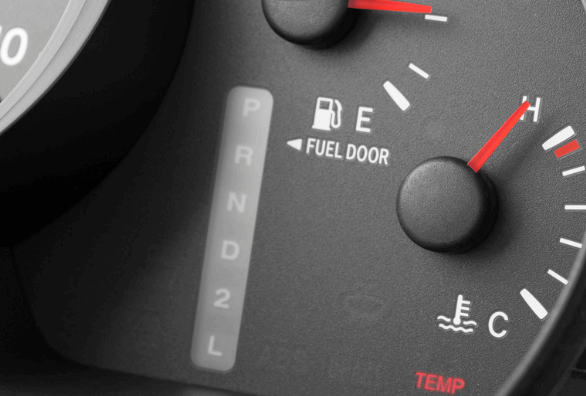As an Amazon Associate, I earn from qualifying purchases
Have you ever wondered just how hot your car’s engine gets while you’re driving? Understanding this can help you take better care of your vehicle and avoid costly repairs.
Your engine works hard every time you start your car, but do you know the temperature it reaches under the hood? Knowing the answer could save you from unexpected breakdowns and keep your ride running smoothly. Keep reading to discover the surprising facts about engine heat and what it means for you and your car.
Engine Temperature Basics
The temperature of a car engine is important for its performance and safety. Engines need heat to run well. But too much heat can cause damage. Understanding how hot a car engine gets helps you keep it in good shape.
Engines use a cooling system to control their temperature. This system moves heat away from the engine. It keeps the engine from getting too hot or too cold. Knowing the basic temperature range and what affects heat helps with car care.
Normal Operating Range
Most car engines run between 195°F and 220°F (90°C to 105°C). This is the normal operating range. Within this range, the engine works efficiently and safely. Too low a temperature can cause poor fuel use. Too high a temperature risks engine damage.
The thermostat controls this temperature. It opens to let coolant flow when the engine gets hot. This keeps the engine from overheating. The temperature gauge on your dashboard shows this range.
Factors Influencing Heat
Many things affect how hot a car engine gets. Driving fast or climbing hills makes the engine work harder. This raises the temperature. Hot weather also adds heat stress to the engine.
Engine size and type matter too. Larger engines may run hotter. Poor maintenance, like low coolant or dirty filters, can cause high heat. Checking these parts helps keep temperature normal.

Credit: www.chapelhilltire.com
Heat Generation Inside Engines
Engines create a lot of heat while running. This heat comes from different parts inside the engine. Understanding how heat forms helps explain why engines get so hot.
Heat comes mainly from burning fuel and from parts moving against each other. Both cause the engine temperature to rise quickly.
Combustion Process
Inside an engine, fuel mixes with air. This mix burns in small explosions. These explosions push the pistons down.
Burning fuel releases a lot of energy. Most of this energy turns into heat. The engine parts near the combustion chamber get very hot.
The heat from combustion can reach thousands of degrees Fahrenheit. The engine design tries to control this heat safely.
Friction And Mechanical Stress
Engine parts move fast and rub against each other. This rubbing creates friction. Friction turns some energy into heat.
Bearings, pistons, and valves all face friction. The engine oil helps reduce this friction and heat.
Mechanical stress also adds to heat. Strong forces inside the engine cause extra heat during operation.
Cooling Systems And Their Role
The cooling system keeps a car engine from getting too hot. Engines create a lot of heat when running. Without cooling, parts can break or stop working.
The system moves heat away from the engine. It uses several parts to do this job well. Each part has a special role in cooling.
Radiator Functionality
The radiator is like a heat exchanger. Hot coolant flows into it from the engine. Air passes through the radiator to cool the liquid inside. This cooled liquid then goes back to the engine. It helps lower the engine temperature quickly and safely.
Coolant Types And Performance
Coolants carry heat away from the engine. Most use a mix of water and antifreeze. Antifreeze stops the coolant from freezing or boiling. Different coolants work better in certain climates. Using the right type helps the cooling system work well. It also protects the engine from rust and corrosion.
Thermostat And Fan Operation
The thermostat controls coolant flow. It stays closed when the engine is cold. This helps the engine warm up fast. When hot, it opens to let coolant move. The fan pulls air through the radiator. It turns on when the engine gets too warm. This extra air helps cool the engine down quickly.

Credit: www.gotodobbs.com
Extreme Temperature Cases
Car engines can reach very high temperatures during normal use. But sometimes, they get much hotter than usual. These extreme temperature cases can cause serious problems. Understanding why engines overheat and what happens next helps keep cars safe and running well.
Overheating Causes
Several things can make a car engine overheat. Low coolant level is a common cause. Without enough coolant, the engine cannot stay cool. A broken water pump also stops coolant from flowing. Radiator problems, like leaks or clogs, block heat from escaping. A faulty thermostat can trap heat inside the engine. Sometimes, driving in hot weather or heavy traffic adds stress and heat. Ignoring these signs leads to extreme temperatures.
Consequences Of Excess Heat
Excess heat damages many engine parts. Metal components can warp or crack. The engine oil may break down and lose its ability to protect. This can cause parts to rub and wear out faster. Overheating also risks a blown head gasket, which is costly to fix. In severe cases, the engine can seize and stop working completely. These problems reduce car performance and increase repair costs.
Heat Measurement Techniques
Measuring the heat of a car engine is important for safety and performance. Engines work best within a specific temperature range. Too hot or too cold can cause damage. Different tools help drivers and mechanics check engine heat. These tools provide real-time information and prevent engine problems.
Temperature Sensors
Temperature sensors are small devices placed inside the engine. They measure the engine’s heat precisely. These sensors send data to the car’s computer system. The system then adjusts engine functions to keep the temperature stable. Sensors help detect overheating early. This prevents engine failure and costly repairs.
Dashboard Gauges
Dashboard gauges show the engine temperature to the driver. The temperature gauge is easy to read. It usually has a needle that moves between cold and hot. This gives a quick view of the engine’s heat level. Drivers can react fast if the needle goes into the red zone. Dashboard gauges are simple but very useful tools.
Preventing Engine Overheating
Preventing engine overheating is key to keeping a car running smoothly. Overheating can cause serious damage and expensive repairs. Simple steps can help avoid this problem and keep the engine cool.
Regular Maintenance Tips
Check the coolant level often. The coolant helps absorb heat from the engine. Change it as recommended in the car manual. Inspect hoses and belts for cracks or leaks. Replace any parts that look worn out. Clean the radiator to remove dirt and debris. Make sure the radiator fan works properly. Regular oil changes also help keep the engine cool. Oil reduces friction and heat inside the engine. Keeping the cooling system in good shape prevents overheating.
Warning Signs To Watch
Watch the temperature gauge on the dashboard. If it rises above normal, stop the car and check. Steam or smoke from under the hood signals overheating. Strange smells or a hot smell inside the car are warning signs. The engine may make knocking or ticking noises. These sounds mean the engine is under stress. Notice if the heater stops blowing warm air. This can mean low coolant levels or overheating. Reacting early to these signs can save the engine from damage.
Surprising Heat Facts
Car engines get hotter than many expect. The heat inside an engine is intense and crucial for its work. Knowing these heat facts helps understand engine care and safety.
Temperature Comparisons
Most car engines run between 195 and 220 degrees Fahrenheit. That is hotter than boiling water, which is 212 degrees. The engine oil can reach even higher temperatures to keep parts moving smoothly. Tires, by contrast, usually stay below 150 degrees. Engine heat is much more extreme than many other car parts.
Record-breaking Engine Heat
Some engines can get extremely hot during racing or heavy use. Temperatures above 500 degrees Fahrenheit have been recorded in high-performance engines. This heat can cause metal to expand and parts to wear faster. Engineers design engines with special materials to handle such heat levels. These records show how tough engines can be under pressure.

Credit: ieabp.com
Frequently Asked Questions
How Hot Does A Typical Car Engine Get?
A car engine usually runs between 195°F and 220°F (90°C to 105°C) during normal use.
Why Does A Car Engine Need To Get Hot?
Heat helps the engine burn fuel efficiently and reduces pollution from exhaust gases.
What Happens If The Engine Gets Too Hot?
Overheating can cause engine damage, like warped parts or a blown head gasket.
How Do Cooling Systems Control Engine Temperature?
They use coolant, radiators, and fans to keep the engine from overheating.
Can Driving Habits Affect Engine Temperature?
Yes, heavy traffic or towing loads can make the engine run hotter than usual.
How Can I Tell If My Engine Is Overheating?
Look for warning lights, steam from the hood, or a high temperature gauge reading.
Conclusion
Car engines get very hot during use, often reaching 195 to 220 degrees Fahrenheit. This heat helps the engine run smoothly. Too much heat can cause damage, so cooling systems are important. Checking your engine temperature regularly keeps your car safe.
Knowing this helps you understand your vehicle better. Keep your engine cool for longer car life. Simple care prevents costly repairs.
As an Amazon Associate, I earn from qualifying purchases


